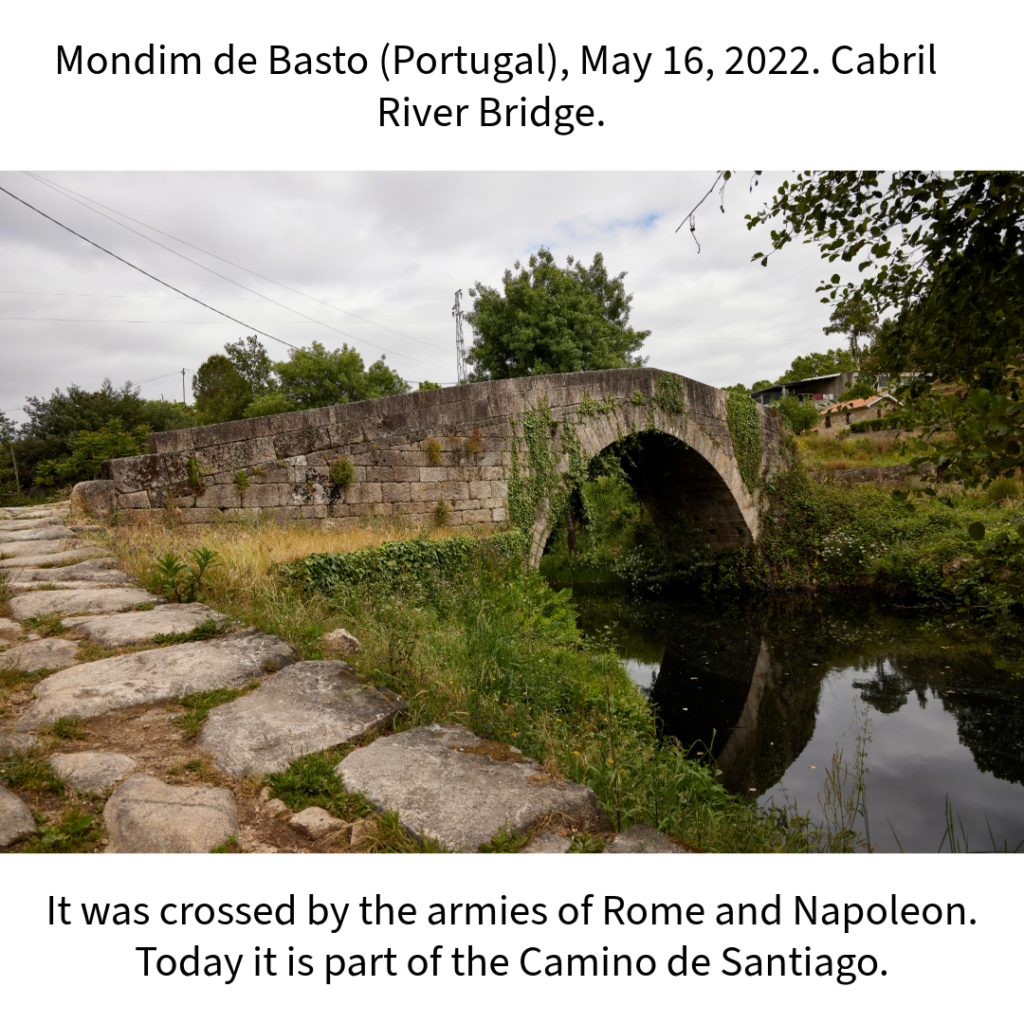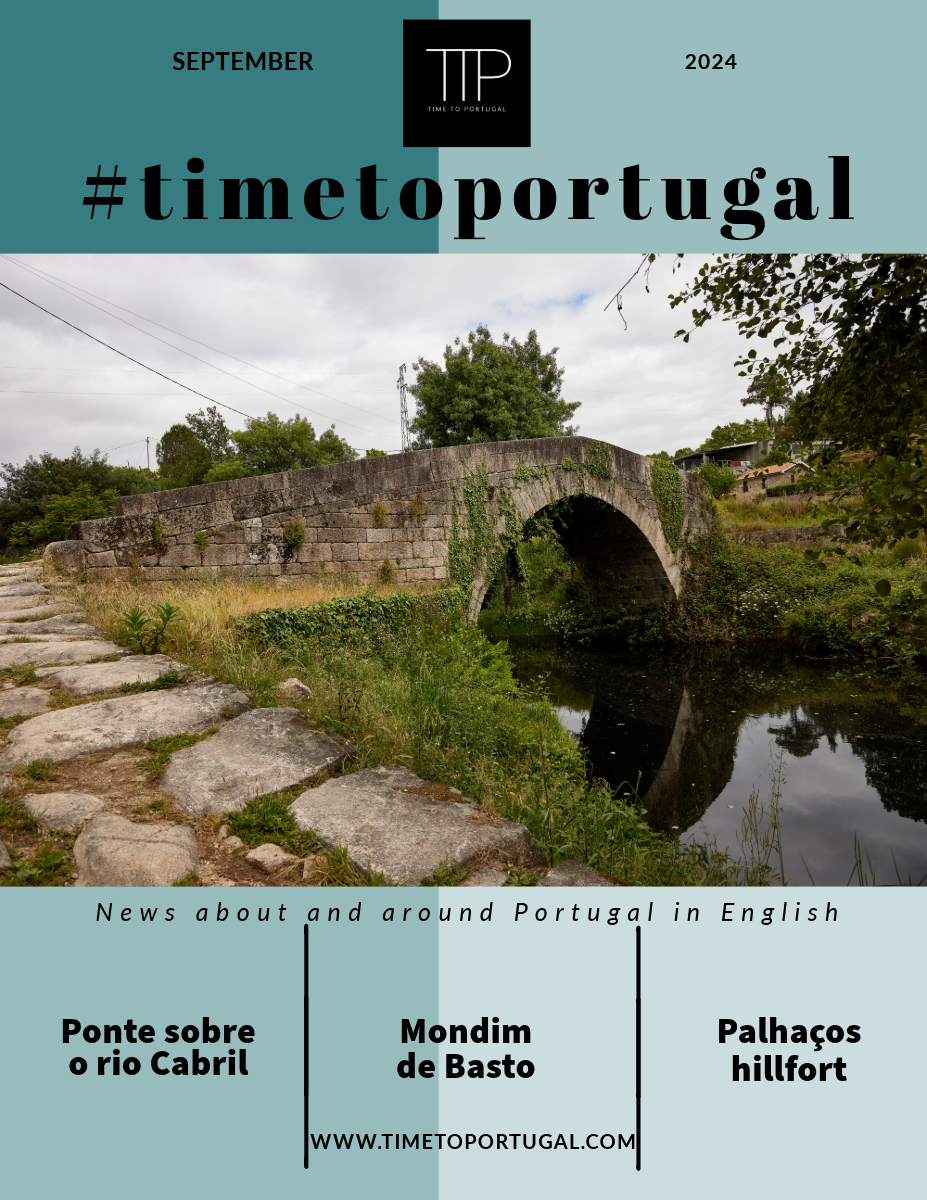Mysticism and the enigma of times gone by predominate in Mondim de Basto, part of the famous Terras de Basto, located in the transitions between Minho and Trás-os-Montes.
Here you can easily find stunning landscapes, mostly characterized by large green fields and waterfalls – in fact, the rivers, streams, forest, mountains and countless cultivated fields are living proof of the natural heritage that dates back to the dawn of nationality.
The origins of the settlement of this land have to be traced back to the Castro eminences. Three hundred meters from the Campos cross stands the Castroeiro hillfort, which could just as easily have been a kind of watchtower linked to the defensive system of the Palhaços hillfort, the political and military center of the entire region.
It was the time of Romanization.
In the 2nd century BC, the Roman legions under the command of the consul Decius Junius Brutus invaded and conquered all these lands. It is known that there was heroic resistance from the mountain tribes.

At the top of Senhora da Graça there may have been the famous city of Cininia, where the bellicose tribe of the Tamecans held sway. They all had to come to terms with the Roman imposition to settle the lower parts. This was the beginning of a period that would last for four centuries.
The fertile lands of this parish would soon show their full productivity. The first forms of civil and administrative organization began. Roads were built, leaving traces in Pedravedra, and bridges such as the one at Vilar de Viando, near the town. Minerals were explored and the art of working tiles and bricks was taught. The Carrazedo tile industry was born.

At a height of 900 meters, at the top of Monte Farinha, we find the enchanting Sanctuary of Nossa Senhora da Graça. Legend has it that once upon a time there was a city called Cininia, home to the Castreja tribe of the Tamecans, who were forced to abandon their territory due to Roman occupation. We can go even further back in time, as the same tale also mentions the existence of a mystical temple built by the same tribe; a temple never seen before, erected long before the sanctuary that occupies the site today – the latter built in 1775.
Around the middle of the 17th century we find D. António Luís de Meneses, 1st Marquis of Marialva, as the grantee of this town of Mondim. He was awarded that title by King João IV, after having been one of the first to acclaim him on December 1, 1640.
He then rendered important services to the country during the wars of the Restoration. At the beginning of the 18th century, the town council of Mondim, together with those of Atei, Cerva and Ermelo, presented a proposal to create a Judge of Fora in these four municipalities. This creation was possible, according to the presentation made by these councils to the Marquis of Marialva, because the territory was rich and had enough population to support a magistrate.
The town of Mondim was chosen as the seat because it was the best and largest settlement, with good buildings, shops and a fair every month. By this time Mondim had become a tanning empire, supplying the whole country with leather and footwear. In 1758, in his original memoir, the parish priest of the parish of S. Cristóvão said he had the title of vicar with an annual income of 350,000 réis.
Mondim de Basto has a remarkable gallery of illustrious figures: Friar António de S. Bernardo Queirós; Friar José de S. Bernardo Mondim Borges de Azevedo Mourão; Abbot José Joaquim da Costa Leite; António da Costa Cardoso; and many, many more who could be mentioned, such as Dr. António Borges de Castro, an obligatory reference in the history of Mondim’s culture in this century.
Born on April 23, 1904 in the city of Rio de Janeiro, he came to Portugal at the age of 3, settling in his parents’ hometown – Mondim de Basto – where he remained until his death on July 17, 1994. He completed his primary education in Mondim de Basto, his secondary education in Guimarães and Porto, and graduated in Law from the University of Coimbra in 1927. He practiced law for many years, but was forced to give up for health reasons.

